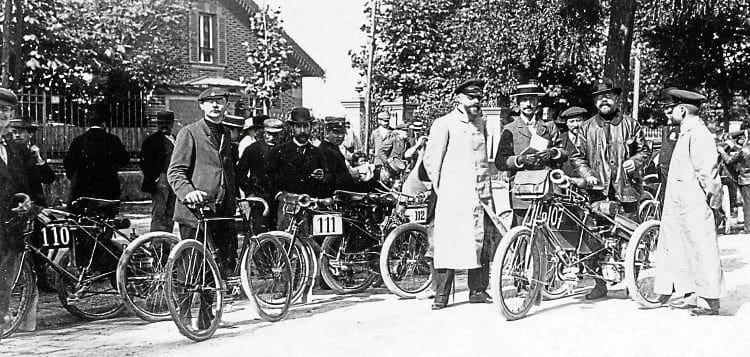Michael Edwards takes a look at the fascinating early history of motorised tricycles as detailed in The Tricycle Book, 1895-1902 Part One.
When Georges Bouton introduced his half horsepower motorised tricycle to the crowds at the Horseless Carriage Exhibition in Tunbridge Wells in 1895, many of the forward thinking and enthusiastic ‘automobilists’ present anticipated rapid progress to be made with the introduction of vehicles to Great Britain. Even with the passing of the Emancipation Act the following year, there were several years to wait before motorised vehicles were a common sight in the country.
In France and Belgium, the picture was different – the absence of speed restrictions or bureaucracy around motoring through towns gave the French motoring enthusiasts a significant advantage.
And the vibrancy of the cycling movement in France and Belgium had created the perfect environment for the newly launched motor tricycles to quickly gather momentum.

Cycle racing in France was the first mass spectator sport and the leading riders acquired cult status. It attracted significant media coverage and commercial sponsorship; indeed, the newspapers of the day were among the most prominent bodies providing financial support.
Riders joined cycling clubs, and their expeditions led to an increased demand for refreshment stops, accommodation, and repair shops.
Cycling organisations were made up of well-heeled individuals who could afford these luxury items, and they demanded improvements to signposting, road-mapping, and standardisation of road traffic rules. Inevitably, it was considered important to be properly equipped and attired.
Retail outlets for every conceivable cycling accessory proliferated in Paris during the 1880s.
Read more and view more images in the April 2019 issue of OBM – on sale now!





